Caution: The following material is for informational purposes only, and is not intended to provide, and should not be relied on for, financial advice. You should consult your own financial advisors before engaging.
Bitcoin and the blockchain are two of the most important inventions since the development of the Internet and the World Wide Web in the late 20th century, and are among the most important inventions of the 21st century so far. Until now, I’ve hesitated to do any serious astrological research on Bitcoin because I’ve been so personally involved with it for many years now…or I guess I should be honest and say I’ve been obsessed with it…I am obsessed with it. This no doubt might cloud my astrological judgment. Nonetheless, the Bitcoin vortex sucked me in and gave me no choice but to do this research and write about it. I have deeply studied and researched this topic and continue to delve into it daily.
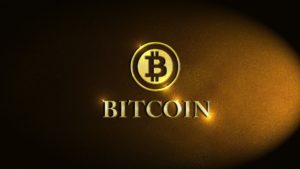 My hope is that my work will be interesting and useful to astrologers and non-astrologers alike. I will be submitting a consecutive series of four articles. In this first one, I discuss Bitcoin and the blockchain for novices. It’s a very technical and non-astrological article but I feel it’s important to first understand the basics of bitcoin before looking into it astrologically. In the next article, I will investigate the birth of bitcoin and make a case for why I am using a rectified horoscope which is different from what other astrologers have been using. In the third article, I will analyze the rectified chart and look at some of the planetary cycles affecting it. And, in the fourth and last of the series, I will look further into various planetary cycles which not only support my rectification of this new birth chart but also guide me in prognosticating about Bitcoin’s future.
My hope is that my work will be interesting and useful to astrologers and non-astrologers alike. I will be submitting a consecutive series of four articles. In this first one, I discuss Bitcoin and the blockchain for novices. It’s a very technical and non-astrological article but I feel it’s important to first understand the basics of bitcoin before looking into it astrologically. In the next article, I will investigate the birth of bitcoin and make a case for why I am using a rectified horoscope which is different from what other astrologers have been using. In the third article, I will analyze the rectified chart and look at some of the planetary cycles affecting it. And, in the fourth and last of the series, I will look further into various planetary cycles which not only support my rectification of this new birth chart but also guide me in prognosticating about Bitcoin’s future.
Trying to understand and describe Bitcoin and the blockchain is no easy feat. Yet, many of us did not understand the Internet, computers, email and the World Wide Web when they were first introduced to us. And I doubt that few of us even today have any real grasp of the technology behind these handy tools that we use every day. That said, having a rudimentary knowledge of this developing technology will help one understand how truly radical and groundbreaking it really is. With bitcoin and the blockchain, there is always something new to learn because they are continually evolving systems.
Bitcoin is 1) a digital (data-based) currency; 2) a store of value; and 3) a payment system. Bitcoin is also known as a “cryptocurrency,” or simply “crypto,” which is a digital currency that uses “encryption techniques” that protect digital data security and regulate the units of currency and verify the transfer of funds. As a digital currency, Bitcoin is not controlled by a central bank. It may be bought through an exchange or received as gift or payment and held electronically in an exchange such as Coinbase, or on a PC, or in a virtual wallet. Bitcoin is the first crypto, but there over a thousand more now which use the original design pattern of Bitcoin or a close derivative of it. Some of these are valuable, but most may not amount to anything significant.
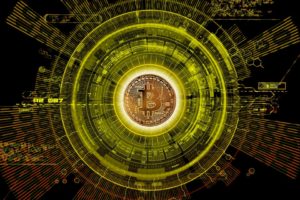 Currently while Bitcoin is still in the early stages of development in terms of its actual role of being used as a currency, the clear majority of Bitcoin investors hold bitcoins as a store of value which is considered a safe haven asset similar to gold. In the future when Bitcoin resolves its scalability issues (the limits on the amount of transactions the Bitcoin network can process), an increasing number of investors may begin to use it more as the currency. In terms of Bitcoin’s function as a payment system, what is important to understand is that it includes a unique distributed ledger or database that is consensually shared, synchronized, and constantly updated across multiple nodes in the Bitcoin network.
Currently while Bitcoin is still in the early stages of development in terms of its actual role of being used as a currency, the clear majority of Bitcoin investors hold bitcoins as a store of value which is considered a safe haven asset similar to gold. In the future when Bitcoin resolves its scalability issues (the limits on the amount of transactions the Bitcoin network can process), an increasing number of investors may begin to use it more as the currency. In terms of Bitcoin’s function as a payment system, what is important to understand is that it includes a unique distributed ledger or database that is consensually shared, synchronized, and constantly updated across multiple nodes in the Bitcoin network.
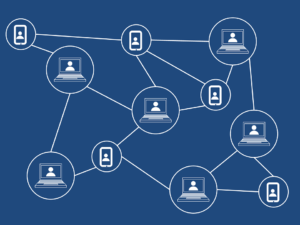 Bitcoin is transforming the very nature of money. Andreas Antonopoulos, technologist, entrepreneur, and one of the well-respected figures in the Bitcoin space, describes it as “decentralization applied to the human communication of value.” Bitcoin is a platform of trust and the first completely open, global, borderless, and decentralized monetary system on which applications can be built. It is programmable and no central authority needs to give permission to launch an application, just as nobody needs to give permission to launch an application on the Internet. Bitcoin is a “peer-to-peer” monetary system, meaning that we can send and receive it to each other without using a banking intermediary: no more need for checks, cash, and credit cards, and no Venmo or PayPal to collect their hefty fees, and it’s virtually instantaneous, limited only by the time required for the verification of transactions.
Bitcoin is transforming the very nature of money. Andreas Antonopoulos, technologist, entrepreneur, and one of the well-respected figures in the Bitcoin space, describes it as “decentralization applied to the human communication of value.” Bitcoin is a platform of trust and the first completely open, global, borderless, and decentralized monetary system on which applications can be built. It is programmable and no central authority needs to give permission to launch an application, just as nobody needs to give permission to launch an application on the Internet. Bitcoin is a “peer-to-peer” monetary system, meaning that we can send and receive it to each other without using a banking intermediary: no more need for checks, cash, and credit cards, and no Venmo or PayPal to collect their hefty fees, and it’s virtually instantaneous, limited only by the time required for the verification of transactions.
Bitcoin represents a fundamental transformation of money, an invention that changes the oldest technology we have in civilization. That changes it radically and disruptively by changing the fundamental architecture into one where every participant is equal, where transaction has no state or context other than obeying the consensus rules of the network that no one controls, where your money is yours. You control it absolutely through the application of digital signatures, and no one can censor it, no one can seize it, no one can freeze it. No one can tell you what to do or what not to do with your money. It is a system of money that is simultaneously, absolutely transnational and borderless. We’ve never had a system of money like that. Andreas M. Antonopoulos
As no central authority regulates the monetary base of Bitcoin, the currency is developed and created by the nodes of a network where it is shared between interested parties. How bitcoins are generated and at what rate this happens is defined by an algorithm, which is a set of rules to be followed in calculations or other problem-solving operations, especially by a computer. If a malicious user does not follow the rules, his or her currency will be rejected by the network and thus be made worthless. The monetary policy of Bitcoin has a very high trust factor. Only a small group of miners and developers can change the policy through a democratic consensus, but this is unlikely to ever happen.
Just as with the Internet, so it is with Bitcoin, in that there is an exponential explosion in innovation when you remove the requirement for permission. Governments will try to regulate it, they will never be able to keep up with the fast pace in which it continually innovates and reinvents itself…Bitcoin cannot be intercepted, seized, controlled, censored, or frozen; transactions cannot be intercepted or stopped; [transactions are made] with almost complete anonymity after downloading one app, and banking has changed forever. Andreas Antonopoulos
Bitcoin was first introduced in late 2008 after the global financial crisis which had been prompted by financial industry deregulation that allowed banks to engage in hedge fund trading with derivatives. Early adopters believe that Bitcoin can and should replace the corrupt banking system.
Through a new breed of distributed computing and cryptography technologies, the Bitcoin community created the first global public ledger that could operate in a secure and trustworthy fashion. But more than that, Bitcoin had politics on its side: Libertarian-leaning advocates saw it as more than a low-cost way to send money. For them, it’s a movement, and many of them have worked tirelessly to evangelize Bitcoin. Every interesting large scale technology movement has had a political component. Chris Dixon, Internet entrepreneur and Investor
Bitcoin follows a deflationary model in that the total supply of bitcoins is fixed; only 21 million bitcoins will ever be mined in total, so the supply cannot inflate. As of today, about 80% of all bitcoins have been mined, and by around 2140 all will have been mined. The 21 million cap was based on the fact that “even if the whole word’s money supply were replaced by the 21 million bitcoins, the smallest unit would still be worth a bit less than a penny, so no matter what happened — even if the entire economy of planet earth were measured in bitcoins — it would never inconvenience people by being too large a unit for convenience.” (Why 1 BTC should equal 10^8 satoshi?) One Satoshi = 0.00000001฿: one hundredth millionth of a bitcoin. This term “Satoshi” is named after the inventor of Bitcoin.
You can buy and sell divisions of a bitcoin, down to the Satoshi, without having to buy a whole bitcoin. This is important as the price of one bitcoin grows. Advocates believe that the limited supply of bitcoins prevents inflationary central-bank interference to which most currencies are prone. Naysayers don’t agree with this deflationary model and fear that if Bitcoin matures into a complete global currency, its very inflexibility could bring economic chaos. These arguments seem to echo the eternal debate that exists among dueling economists.
 Bitcoin is often thought to be somewhat like gold, for a few reasons. First, just like gold, it has a limited quantity. The finite supply of bitcoins explains why it currently trades much more like a commodity than a fiat currency. And this limited supply also explains Bitcoin’s volatility, which may change someday when it is more widely adopted as a currency. The other similarity with gold is that Bitcoin also has to be “mined” through an intensive process, and in fact, it’s often called “digital gold,” though its detractors like to argue against that point.
Bitcoin is often thought to be somewhat like gold, for a few reasons. First, just like gold, it has a limited quantity. The finite supply of bitcoins explains why it currently trades much more like a commodity than a fiat currency. And this limited supply also explains Bitcoin’s volatility, which may change someday when it is more widely adopted as a currency. The other similarity with gold is that Bitcoin also has to be “mined” through an intensive process, and in fact, it’s often called “digital gold,” though its detractors like to argue against that point.
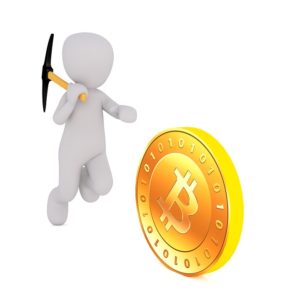 Bitcoin mining is 1) the process by which Bitcoin transactions are verified and added to the blockchain (public ledger); and 2) the means through which new bitcoins are released. Every ten minutes or so, mining computers collect a few hundred pending Bitcoin transactions, known as a block, and turn them into a computational puzzle that must be solved. The miner who solves the puzzle gets a certain number of bitcoins as a reward which is collected after another 99 blocks have been added to the ledger. It’s become very expensive to mine bitcoins as the mining computers are very costly, and many of them are needed, and a great deal of electrical energy is required to run them.
Bitcoin mining is 1) the process by which Bitcoin transactions are verified and added to the blockchain (public ledger); and 2) the means through which new bitcoins are released. Every ten minutes or so, mining computers collect a few hundred pending Bitcoin transactions, known as a block, and turn them into a computational puzzle that must be solved. The miner who solves the puzzle gets a certain number of bitcoins as a reward which is collected after another 99 blocks have been added to the ledger. It’s become very expensive to mine bitcoins as the mining computers are very costly, and many of them are needed, and a great deal of electrical energy is required to run them.
 It becomes harder and harder to mine Bitcoin because of something built into the Bitcoin code which is called “halving.” This means the rate at which Bitcoin can be generated drops by half every 210,000 blocks, or approximately every four years, until all are in circulation. In the beginning days of Bitcoin, a miner could earn 50 bitcoins for sealing the block on a Bitcoin ledger (i.e., solving the mathematical puzzle). The halving changed that number from 50 to 25 bitcoins in late 2012, and then again in July 2016 when it halved to 12.5 bitcoins that can be earned when sealing the block on the ledger. As many small-scale developers, hobbyists, and speculators are no longer able to compete in the high-tech and super-competitive mining market, they are now getting involved in mining pools like GHash which allows them to share processing power and split rewards.
It becomes harder and harder to mine Bitcoin because of something built into the Bitcoin code which is called “halving.” This means the rate at which Bitcoin can be generated drops by half every 210,000 blocks, or approximately every four years, until all are in circulation. In the beginning days of Bitcoin, a miner could earn 50 bitcoins for sealing the block on a Bitcoin ledger (i.e., solving the mathematical puzzle). The halving changed that number from 50 to 25 bitcoins in late 2012, and then again in July 2016 when it halved to 12.5 bitcoins that can be earned when sealing the block on the ledger. As many small-scale developers, hobbyists, and speculators are no longer able to compete in the high-tech and super-competitive mining market, they are now getting involved in mining pools like GHash which allows them to share processing power and split rewards.
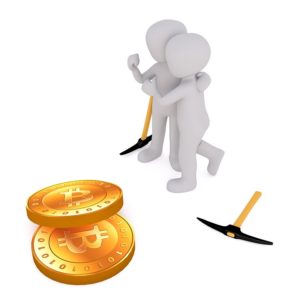 So what is the blockchain and how is it the same or different from Bitcoin? Well, Bitcoin transactions are stored and transferred using a distributed ledger, and the blockchain is the supporting technology that maintains this process. A blockchain is the continuously growing list of records (blocks) which are linked and secured using cryptography. Inside every block is a cryptographic hash (a function used to map data) of the previous block, including a timestamp and transaction data. The blockchain cannot be modified as the blocks are recorded in chronological order. Thus it allows participants to keep track of digital currency records without any central accounting.
So what is the blockchain and how is it the same or different from Bitcoin? Well, Bitcoin transactions are stored and transferred using a distributed ledger, and the blockchain is the supporting technology that maintains this process. A blockchain is the continuously growing list of records (blocks) which are linked and secured using cryptography. Inside every block is a cryptographic hash (a function used to map data) of the previous block, including a timestamp and transaction data. The blockchain cannot be modified as the blocks are recorded in chronological order. Thus it allows participants to keep track of digital currency records without any central accounting.
The blockchain can communicate value on other kinds of platforms aside from Bitcoin and other cryptos, such as with tokens and reward points. It also authenticates digital information for applications outside of cryptos. The blockchain can expedite and streamline business transactions, reducing fraud, and enhancing transparency of all kinds of verification processes. Such applications are already being explored or developed in private, industrial, and government sectors, and include areas of crowd funding; trade finance; advertising and media; real estate sales transactions; accounting and auditing; money laundering protection; insurance through smart contracts; connecting medical devices with health records; voting; supply chain management; filing taxes; energy supply transactions; identity theft protection and cyber-security; data storage; and, even an online encyclopedia known as Everipedia!
 We don’t yet know which of the 1000+ cryptos that were developed in Bitcoin’s wake will become “the one” or not. But either way, I believe Bitcoin is the “killer app” for all cryptos and blockchain technology, just as email was the “killer app” for the early Internet, meaning it’s what drove adoption and strengthened the Internet: “Bitcoin drives adoption of its underlying blockchain, and its strong technical community and robust code review process make it the most secure and reliable of the various blockchains. Like email, it’s likely that some form of Bitcoin will persist.” (Ito, Narula, Ali: The Blockchain Will Do to the Financial System What the Internet Did to Media)
We don’t yet know which of the 1000+ cryptos that were developed in Bitcoin’s wake will become “the one” or not. But either way, I believe Bitcoin is the “killer app” for all cryptos and blockchain technology, just as email was the “killer app” for the early Internet, meaning it’s what drove adoption and strengthened the Internet: “Bitcoin drives adoption of its underlying blockchain, and its strong technical community and robust code review process make it the most secure and reliable of the various blockchains. Like email, it’s likely that some form of Bitcoin will persist.” (Ito, Narula, Ali: The Blockchain Will Do to the Financial System What the Internet Did to Media)
Bitcoin evangelists believe that Bitcoin is going to change the world. They believe this for many reasons, including the fact that it can level the socio-economic playing field by bringing everyone on the planet into the global economy. In this respect, the Bitcoin movement represents the “democratization of money.” As of now, over two billion people in the world are currently unbanked, meaning they don’t have access to affordable financial institutions through which to make business transactions and transfers of money. But these unbanked, many of whom are in developing nations, have access to mobile phones by which they can make free and easy financial transactions via Bitcoin without using the medium of a banking institution which charges them exorbitant fees and has other requirements that are difficult for them to meet. The number of these individuals using Bitcoin is slated to grow by 30 percent or more over the next five years.
At the end of the day, Bitcoin is a programmable version of money. When you have programmable money, the possibilities are truly endless. We can take many of the basic concepts of the current system that depend on legal contracts, and we can convert these into algorithmic contracts, into mathematical transactions that can be enforced on the Bitcoin network. As I’ve said, there is no third party, there is no counterparty. If I choose to send value from one part of the network to another, it is peer-to-peer with no one in between. If I invent a new form of money, I can deploy it to the entire world and invite others to come and join me. Bitcoin is not just money for the Internet. Yes, it’s perfect money for the Internet. It’s instant, it’s safe, and it’s free. Yes, it is money for the Internet, but it’s so much more. Bitcoin is the Internet of money. Currency is only the first application. If you grasp that, you can look beyond the price, you can look beyond the volatility, you can look beyond the fad. At its core, Bitcoin is a revolutionary technology that will change the world forever. Andreas M. Antonopoulos, The Internet of Money
Just when I think I understand something about Bitcoin and the blockchain, I realize how little I know and have to go back to my Beginner’s Mind to understand something else that may be very basic but which I had previously overlooked or not understood correctly. It is like a black hole that keeps pulling me deeper inside. And please remember this “black hole” analogy, as I will come back to it in one of my subsequent articles, as the center of our Milly Way Galaxy which holds a large black hole literally has a significant part to play in my rectified Bitcoin birth chart.
 Satoshi Nakamoto is the anonymous entity who invented the bitcoin protocol. He not only formulated the exceptionally brilliant idea of the consensus algorithm which prevents a digital asset from being used in two places at once, but also came up with the initial software system that invented this digital currency. The former is known as the “double spend problem” which had been a significant roadblock to the development of digital currency up until his discovery. The nature of digital media is to create a copy of itself infinitely, which would obviously create a big problem for a currency transaction which we definitely don’t want to replicate. So who is Satoshi Nakamoto? That is the “21-million Bitcoin question” which I will address in Part Two of this series.
Satoshi Nakamoto is the anonymous entity who invented the bitcoin protocol. He not only formulated the exceptionally brilliant idea of the consensus algorithm which prevents a digital asset from being used in two places at once, but also came up with the initial software system that invented this digital currency. The former is known as the “double spend problem” which had been a significant roadblock to the development of digital currency up until his discovery. The nature of digital media is to create a copy of itself infinitely, which would obviously create a big problem for a currency transaction which we definitely don’t want to replicate. So who is Satoshi Nakamoto? That is the “21-million Bitcoin question” which I will address in Part Two of this series.
 I provide articles on this site and on my Astral Harmony Facebook blog as free education, and the time and energy I spend is considerable. In the past, my readers and fans have asked how they can contribute as a way of saying “thank you.” If you would like to support my work, please feel free to “Help and Support” via one of the pay buttons above (PayPal or Bitcoin). Thank you!
I provide articles on this site and on my Astral Harmony Facebook blog as free education, and the time and energy I spend is considerable. In the past, my readers and fans have asked how they can contribute as a way of saying “thank you.” If you would like to support my work, please feel free to “Help and Support” via one of the pay buttons above (PayPal or Bitcoin). Thank you!
